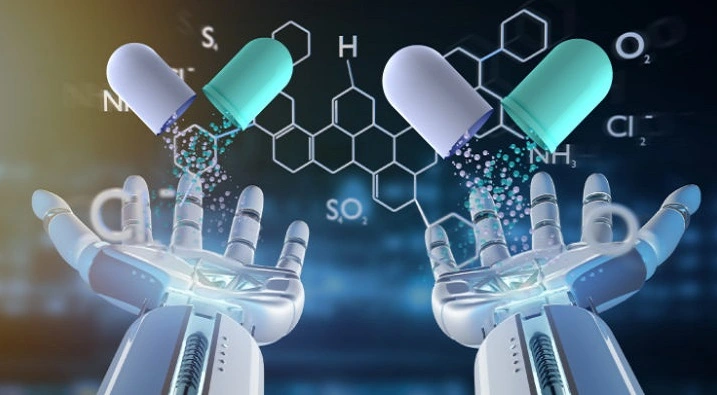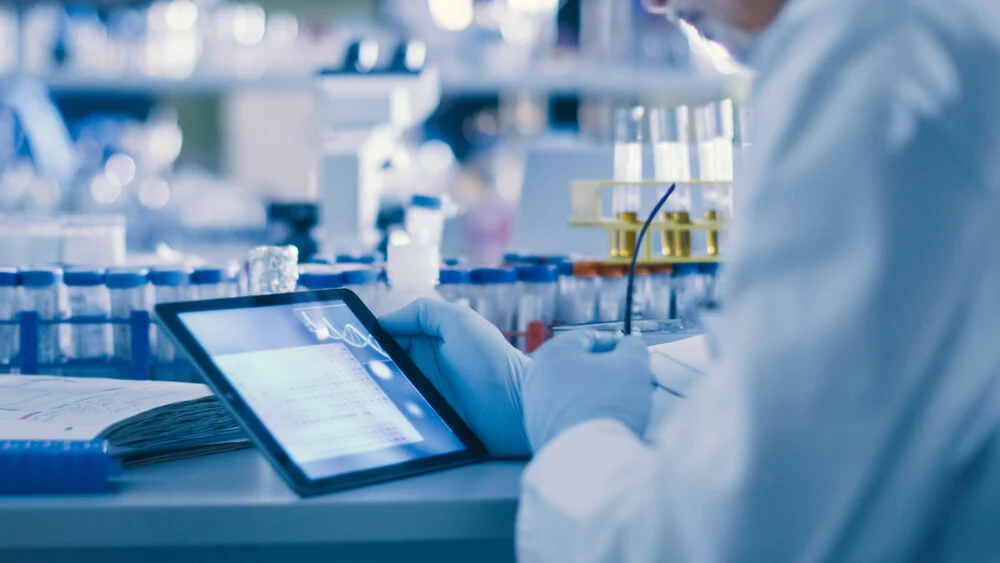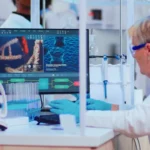Drug discovery is a long and costly process. Traditionally, it involves years of research and millions of dollars. However, with the rise of this technology, several myths and misconceptions have emerged. These myths can cloud the understanding of its true potential and limitations.
This article aims to debunk some of the most common myths about the role of generative AI in drug discovery, shedding light on what this technology can and cannot do. Before dispelling the misconceptions, lets understand what is the actual role of generative AI in drug discovery explained in steps.
Understanding Generative AI
Before finding out what is the role of generative AI in drug discovery, it’s important to understand what generative AI is. Generative AI refers to AI systems that can create new content. This can include images, music, text, and even new drug molecules. Unlike traditional AI, which might classify data or predict outcomes, generative AI can produce novel outputs.
That’s why there are numerous generative AI models and tools available for the healthcare sector, each designed to tackle different challenges and enhance various aspects of drug discovery and development.
The Traditional Drug Discovery Process
The traditional drug discovery process involves several steps:
- Target Identification: Finding a biological target, such as a protein, associated with a disease.
- Lead Compound Identification: Discovering a compound that interacts with the target.
- Optimization: Refining the compound to improve its effectiveness and reduce side effects.
- Preclinical Testing: Testing the compound in cells and animals.
- Clinical Trials: Conducting trials in humans to ensure safety and efficacy.
This process can take over a decade and cost billions of dollars. But what is the role of generative AI in drug discovery? It aims to streamline and accelerate these steps.

How Generative AI is Transforming Drug Discovery
1. Target Identification
Generative AI can analyze vast amounts of biological data to identify new drug targets. By processing complex datasets, AI models can find patterns and associations that humans might miss. This can lead to the discovery of novel targets that were previously overlooked.
2. Lead Compound Identification
One of the most significant roles of generative AI in drug discovery is in identifying lead compounds. Traditional methods rely on screening thousands of compounds, a process that is both time-consuming and expensive. Generative AI can predict and generate new compounds that are likely to interact with the target. This reduces the need for extensive physical screening and speeds up the discovery process.
For example, generative models like Generative Adversarial Networks (GANs) and Variational Autoencoders (VAEs) can create new molecular structures. These models are trained on existing chemical libraries and can generate compounds with desired properties. This innovative approach can lead to the discovery of novel drugs faster than ever before.
3. Optimization
After identifying a lead compound, it needs to be optimized for better efficacy and safety. The role of generative AI in drug discovery extends to this step as well. AI models can predict how changes in the molecular structure will affect the compound’s properties. This allows researchers to make informed decisions and optimize the compound more efficiently.
4. Preclinical Testing
Generative AI can also simulate how a compound will behave in biological systems. By creating virtual models of cells and tissues, AI can predict the compound’s effects and potential side effects. This reduces the reliance on animal testing and accelerates the preclinical phase.
5. Clinical Trials
Even in clinical trials, the role of generative AI in drug discovery is significant. AI can help design more efficient trial protocols and predict patient responses. This can lead to shorter and more effective clinical trials, bringing new drugs to market faster.
As it could be understand how generative AI significantly accelerates drug discovery by predicting potential compounds and streamlining the research process. However, it’s important to recognize its limitations and dispel common misconceptions.
Let’s separate the facts from the fiction by debunking the myths surrounding generative AI role in drug discovery.

Myth 1: Generative AI Will Replace Human Scientists
The Reality
One of the most pervasive myths is that generative AI will replace human scientists. In reality, AI is a tool that enhances human capabilities rather than replacing them. Drug discovery is a complex process that requires human intuition, creativity, and expertise. Generative AI can handle vast datasets and identify patterns that might be missed by humans, but it cannot replicate the nuanced understanding that experienced scientists bring to the table. The role of generative AI in drug discovery is to assist and augment the work of researchers, making the process more efficient and effective.
Myth 2: Generative AI Can Instantly Discover New Drugs
The Reality
The idea that generative AI can instantly discover new drugs is an exaggeration. While generative AI can significantly speed up certain aspects of drug discovery, it is not a magic solution. Drug discovery involves multiple stages, including target identification, lead compound discovery, optimization, and rigorous testing. AI can streamline these stages by predicting potential compounds and their interactions, but the entire process still requires extensive validation through laboratory experiments and clinical trials. The role of generative AI in drug discovery is to expedite the process, not to bypass it.
Myth 3: Generative AI Is Always Accurate
The Reality
Another common misconception is that generative AI is infallible. Like any technology, AI has its limitations and can make mistakes. The accuracy of AI models depends heavily on the quality and quantity of the data they are trained on. In drug discovery, this means that AI predictions are only as good as the underlying biological and chemical data. Moreover, AI models can sometimes produce false positives or negatives, leading to misleading results. Human oversight is crucial to validate AI-generated outcomes and ensure their reliability.
Myth 4: Generative AI Can Work with Minimal Data
The Reality
Some believe that generative AI can work effectively with minimal data. In truth, AI models, especially those used in drug discovery, require large and diverse datasets to function accurately. Training an AI model on limited data can result in overfitting, where the model performs well on the training data but poorly on new, unseen data. In drug discovery, this means that AI-generated compounds might not be effective in real-world scenarios. High-quality, comprehensive datasets are essential for the success of generative AI in this field.
Myth 5: Generative AI Is a Standalone Solution
The Reality
Generative AI is not a standalone solution but part of a larger ecosystem. Effective drug discovery involves integrating AI with other technologies and methodologies. For instance, AI-generated compounds need to be synthesized and tested in the lab. Moreover, AI predictions must be combined with traditional experimental techniques to validate their efficacy. The role of generative AI in drug discovery is to complement and enhance traditional methods, not to replace them entirely.
Myth 6: Generative AI Is Free from Ethical and Regulatory Concerns
The Reality
The belief that generative AI operates without ethical or regulatory concerns is misguided. AI in drug discovery must adhere to strict ethical guidelines and regulatory standards. Issues such as data privacy, informed consent, and bias in AI models must be addressed. Additionally, regulatory bodies like the FDA require thorough validation and approval of AI-generated drugs before they can be marketed. Ethical and regulatory oversight is crucial to ensure the safe and responsible use of generative AI in drug discovery.
Myth 7: Generative AI Is Only for Large Pharmaceutical Companies
The Reality
There is a myth that only large pharmaceutical companies can afford to use generative AI. While it is true that developing and implementing AI can be costly, advances in technology are making it more accessible to smaller companies and research institutions. Cloud computing, open-source AI frameworks, and collaborative platforms are reducing the barriers to entry. Smaller biotech startups and academic researchers can leverage generative AI to accelerate their drug discovery efforts, democratizing the field.

Myth 8: Generative AI Can Replace Clinical Trials
The Reality
Generative AI cannot replace clinical trials. While AI can predict how a drug might interact with biological targets and suggest promising candidates, clinical trials are essential to confirm safety and efficacy in humans. AI can help design better clinical trials and identify patient subgroups, but it cannot eliminate the need for rigorous testing in real-world conditions. The role of generative AI in drug discovery is to complement clinical trials, not replace them.
Conclusion
Generative AI holds great promise in transforming drug discovery, but it is important to separate fact from fiction. By debunking these common myths, we can gain a clearer understanding of what generative AI can realistically achieve. It is a powerful tool that enhances human capabilities, accelerates the drug discovery process, and complements traditional methods. However, it is not a magic bullet that can replace human expertise, instantly discover drugs, or bypass ethical and regulatory considerations. As we continue to explore the potential of generative AI in drug discovery, a balanced and informed perspective is crucial for harnessing its full potential responsibly.



